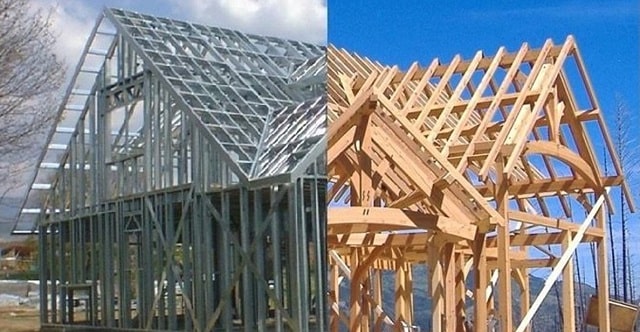
In the construction industry, wood and steel are two popular materials used for framing buildings. While wood has been a traditional choice for centuries, steel is gaining popularity due to its numerous benefits. This article will explore the advantages of steel frame construction over wood frame construction.
Strength And Durability
When it comes to steel frame vs wood frame, one of the most significant benefits of steel frame construction is its strength and durability. Steel is a robust material that can withstand harsh weather conditions, earthquakes, and fire. Unlike wood, steel does not warp, crack, or rot, making it an ideal choice for building structures that require long-term durability.
Steel frames also have a higher load-bearing capacity than wood frames. Steel frames can support more weight without compromising their structural integrity. As a result, steel-frame buildings have a longer lifespan than wood-frame buildings.
Energy Efficiency
Another significant advantage of steel frame construction is its energy efficiency. Steel frames have excellent thermal insulation properties, which means that they can help reduce energy costs by keeping the building warm in the winter and cool in the summer. This is particularly important in commercial buildings where energy costs can be high.
In addition to their thermal insulation properties, steel frames are better at preventing air infiltration than wood frames. This means they can help reduce the energy loss caused by drafts and air leaks. As a result, steel frame buildings require less heating and cooling, leading to significant energy savings.
Fire Resistance
Steel frame construction is also more fire-resistant than wood frame construction. Steel does not burn, and therefore, it does not contribute to the spread of fire. In contrast, wood is a combustible material that can quickly catch fire, leading to significant damage to the building and potential loss of life.
The fire-resistant properties of steel make it an ideal choice for buildings that require high levels of fire protection, such as hospitals, schools, and commercial buildings. Using steel frame construction, building owners can minimize the risk of fire and protect the occupants of the building.
Environmental Sustainability
Steel frame construction is also environmentally sustainable. Steel is highly recyclable and can be reused to create new products. This reduces the amount of waste in landfills and helps conserve natural resources.
In addition, steel frame construction produces less waste than wood frame construction. This is because steel frames are prefabricated off-site and are cut to exact measurements, which minimizes waste. On the other hand, wood frames are typically cut on-site, which leads to more waste.
Speed Of Construction
Steel frame construction is also faster than wood frame construction. This is because steel frames are prefabricated off-site and are delivered to the construction site ready to be assembled. This reduces the time required for on-site construction, which can help reduce project costs.
Low Maintenance
Steel frame construction is also low maintenance. Steel does not require the same level of maintenance as wood, which can rot, warp, or crack over time. This means that steel frame buildings require less maintenance than wood frame buildings, leading to lower maintenance costs over the lifespan of the building.
Construction Conclusion
Regarding steel frame vs wood frame, steel frame construction offers numerous benefits over wood frame construction. Steel frames are stronger, more durable, and more fire-resistant than wood frames. They are also more energy-efficient, environmentally sustainable, faster to construct, and require less maintenance. For these reasons, steel frame construction is becoming an increasingly popular in the construction industry.
